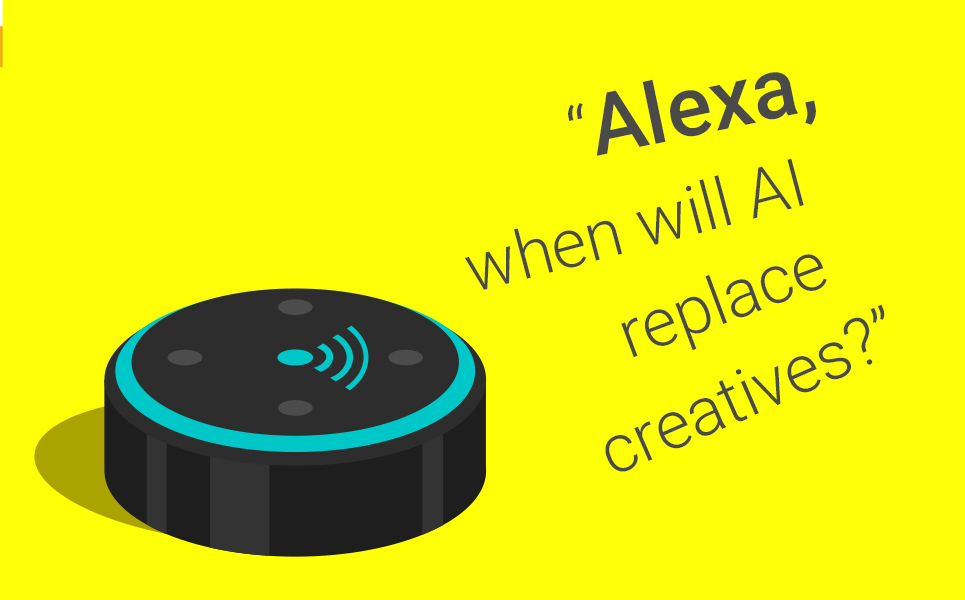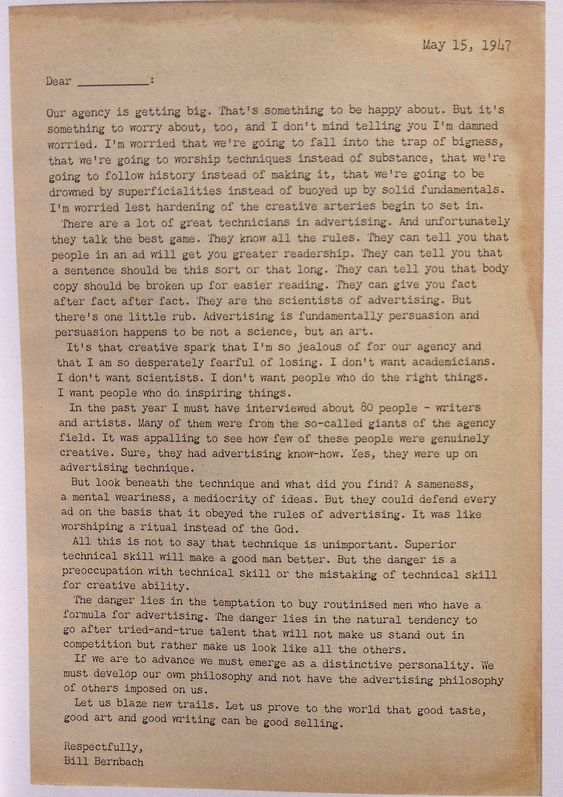Alexa, When Will AI Replace Creatives?

Alexa, When Will AI Replace Creatives?
With AI adoption steadily rising, Laurence Quinn, Creative Director at Five by Five debates what it could mean for the creative industry.
Should we creatives fear for our jobs? Will the introduction of AI in advertising be the equivalent of train drivers being replaced by driverless trains?
Or is the scarier thing that scientists are increasingly unable to explain how AI works at all?
The recent launch of the AI chatbot ChatGPT has been one of the most impressive forms of AI so far. It’s got the likes of Google talking and judging by Linkedin, much of the ad industry too.
According to the Times of India, “AI is predicted to take up to 80 percent of global advertising spend in the world.”
One of the reasons for this is that the ad industry has been moving from big executions to smaller ones. Instead of creating a big telly, poster or print campaign once a year, it is increasingly about very small, online ads. This has meant creative agencies or marketing departments have to produce dozens or hundreds of variations of digital ads on social or web banners, each with slightly different imagery and copy.
Agencies like Pencil in Singapore can automatically generate dozens of six, ten or 15-second Facebook video ads in minutes. It cuts videos into scenes, generates copy, applies animations and then uses a predictive system that looks at things that have worked in the past for the brand.
This is understandably appealing to clients as they are always looking for ways to save time and cut costs.
When it comes to the specific job of coming up with an idea you may also speculate that tech companies are also responding to some marketeer’s approach to advertising; which is seeing it as a science. Many clients think that if you can gather the right data from your target audience you can use a formula or in this case use artificial intelligence, to spit out an ad that is an IPA effectiveness Grand Prix winner.
The argument about advertising being art vs a science isn’t new but one that’s worth considering when exploring the possibilities of AI in coming up with ideas. The case for the creative mind was put very well in 1947 by the advertising legend Bill Bernbach (the ‘B’ in Adam & Eve DDB) who wrote this well worth reading letter to his staff:

If you haven’t time to read it then I’ll paraphrase…
“There are a lot of great technicians in advertising. And unfortunately they talk the best game… They can tell you that having people in an ad will get you greater readership. They can tell you that a sentence should be this short or that long. They can give you fact after fact after fact. They are the scientists of advertising. But there’s one little rub. Advertising is fundamentally persuasion and persuasion happens to be not a science, but an art.”
To be fair, this letter was written by a 68-year-old man from the days of three-martini lunches, skinny ties, smoking in the office and who’d never experienced the internet, but I believe his point still stands.
The truth is that data is really really useful and always has been. We have gone from using research found in a Mintel report to online tracking, analytics and algorithms that can offer up a wealth of data on your target audience and with surgical precision. We also shouldn’t overlook the fact that data is only helpful if it can be turned into an insight by a human, that a human can interpret and ultimately resonate with.
As a creative myself I love tech. I love using it in my spare time and I love thinking of ways to marry tech with advertising. So I am interested to see ads that are created by start-up companies like Omneky. They use OpenAI’s DALLE-2 and GPT-3 models to generate visuals and text which are intended to be used in ads for social platforms.
Ad agency 10 Days has also used an AI-driven platform ‘Midjourney’ to reimagine ads for ten iconic brands. Each piece of artwork was generated using simple, genre-based words. The entire process took just five minutes which is amazingly efficient. And the output? Well, it’s great if the brief is to create something very surreal.
From what I have seen so far, the problem with ads created by artificial intelligence is that they are – unsurprisingly – rather artificial. However, as we know, technology is constantly improving at a rapid rate.
There is also another wider problem, which is that science has already started to triumph over art in other areas of the process. Creative people are only as good as the opportunities they’re given – remember Bob Gill’s dictat “If you want an interesting answer, ask me an interesting question”. If the marketing function as a whole starts relying too much on logic and stops looking for magic – and if CEO’s continue seeing advertising as a cost not an investment – then AI won’t just be a problem for creative directors but for marketing directors as well.
Will it ever replace creatives? No. Technology will continue to offer up fascinating possibilities and, wherever possible, will continue to streamline the process. But if history is anything to go by, just as technology will always deliver mind-bending new possibilities and opportunities, creative minds will always find jaw-dropping new ways to harness them.
Laurence Quinn is the Creative Director at creative and innovation agency, Five by Five.

